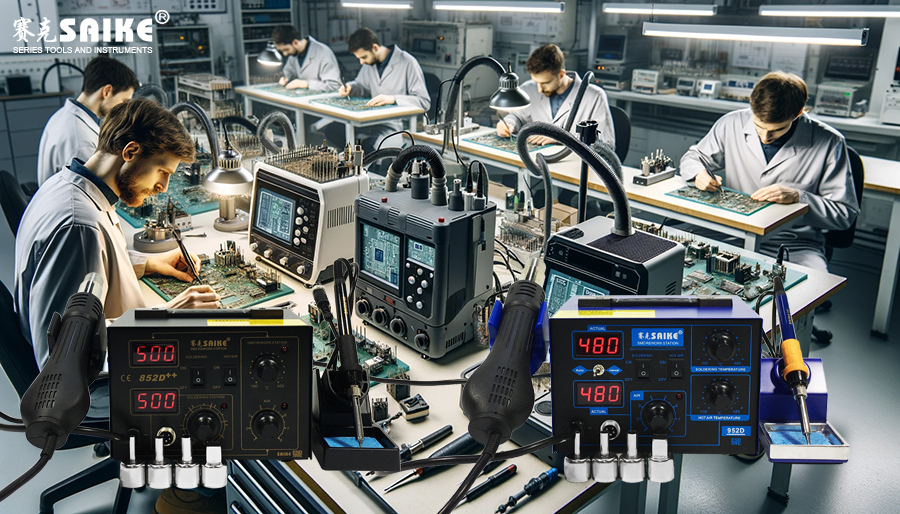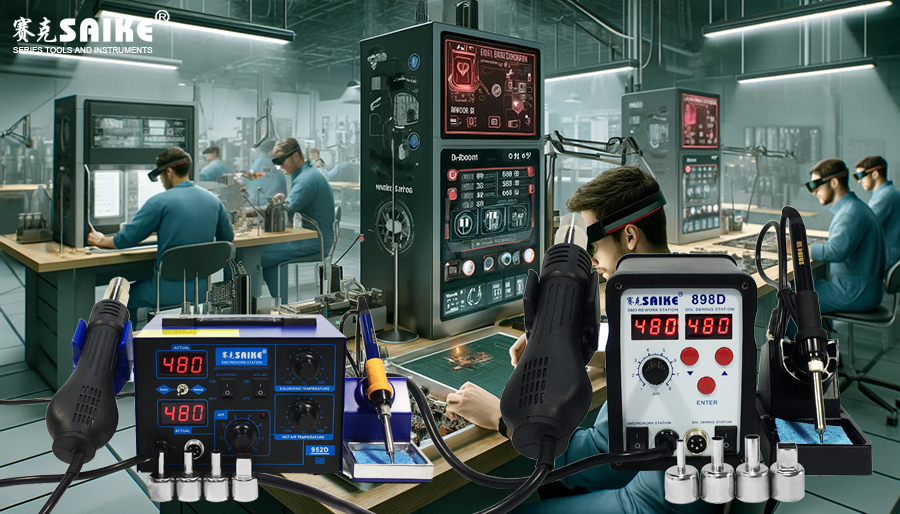
SK-YJ000RFCHT-KP 100005
A hot air rework station is an indispensable tool in electronic repair and manufacturing, and making the right choice can greatly improve work efficiency and product quality. This article will explore how to select a suitable hot air rework station based on different needs.
I. Clarify the usage requirements:
Before choosing a hot air rework station, it is necessary to clarify your own usage requirements:
1.Operation frequency: Consider how often you will use the hot air rework station. If it is for continuous daily use, you may need a more durable industrial-grade device.
2.Working environment: Will you be operating at a fixed workstation or do you need to move to different locations for on-site service? This will affect whether you should consider portable equipment.
3.Types of components handled: Different electronic components have different requirements for hot air temperature and air speed. Handling smaller or more sensitive components may require finer temperature control and multiple nozzle options.
4.Budget constraints: Budget is a key factor in the decision-making process, and it will directly affect the type and functionality of the equipment you can choose.
II. Understand different types of hot air rework stations:
Based on the previous analysis, you should have some understanding of the different types of hot air rework stations:
1.Basic type: Suitable for beginners or low-frequency use, with lower prices but limited functionality.
2.Digital control type: Provides precise temperature and air speed control, suitable for professionals who require fine operation.
3.Hot air rework station: Integrates multiple functions, suitable for complex repair tasks and multitasking operations.
4.Portable: Lightweight and easy to carry, suitable for outdoor service and space-limited environments.
5.High-end industrial grade: Designed for continuous, high-intensity use, with high durability and reliability, suitable for large-scale production environments.
III. Consider key technical parameters:
When choosing a hot air rework station, consider the following technical parameters:
1.Temperature range and stability: Ensure that the equipment can provide a sufficient temperature range and maintain temperature stability during long-term operation.
2.Air speed adjustment: Different repair tasks may require different air speeds, and choosing a model with adjustable air speed will increase flexibility.
3.Nozzle type and replaceability: Different nozzles are suitable for components of different sizes and shapes. Choosing a model with replaceable nozzles can adapt to changing work requirements.
4.Additional functions: Features such as automatic cooling systems, error alarms, and preset programs can improve operational convenience and safety.
IV. Consider the brand and after-sales service:
Choosing a hot air rework station from a well-known brand can usually guarantee the quality and reliability of the equipment. At the same time, good after-sales service can provide necessary support and maintenance when equipment problems occur, ensuring the long-term operation of the equipment.
V. Read user reviews and recommendations:
Before making a final purchase decision, reviewing other users’ evaluations and professional recommendations can provide insights into actual use. This information can help you understand the actual performance of the equipment and possible problems.
VI. Summary
In summary, choosing a suitable hot air rework station is the key to ensuring the smooth progress of electronic repair and manufacturing work. By carefully analyzing usage requirements, understanding the characteristics of different types of equipment, evaluating technical parameters, considering brands and user evaluations, you can select the most suitable hot air rework station for your needs. Such a choice can not only improve work efficiency but also ensure the quality of repairs, thereby saving time and costs in the long run.


